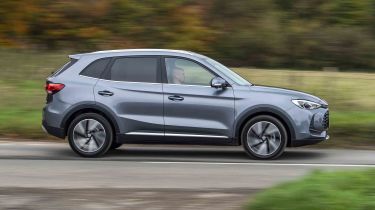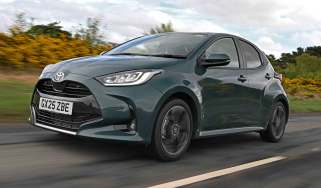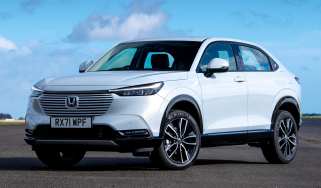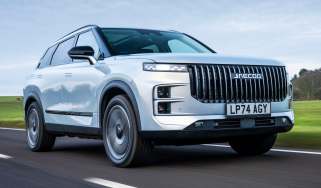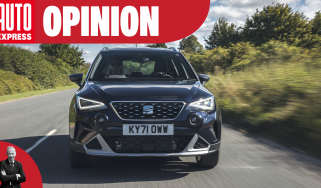MG ZS - Engines, performance and drive
Strong hybrid powertrain is a highlight of an otherwise competent driving experience

From launch, there’s only one powertrain available for the ZS. The new hybrid set-up is shared with the smaller MG3 hatchback, which means the petrol engine can drive the wheels directly if necessary, but for the most part it acts as a generator, sending energy to charge the 1.83kWh battery, which powers the electric motor.
As with the MG3, the ZS relies on the electric motor more than the petrol engine. On its own the little e-motor makes 134bhp and 250Nm – a figure which beats the combined output of many of its rivals. That’s backed up by a 1.5-litre four-cylinder petrol engine, which helps out with another 101bhp and 128Nm. All in, the combined system output is 193bhp and a hefty 343Nm of torque.
On paper, a three-speed automatic gearbox sounds like a throwback to MG of the Seventies, but it’s all that is really needed as a result of that electric motor. The engine itself is a development of the 1.5-litre petrol used in earlier MG models; while we’ve found it pretty unpleasant in the past, here it’s very much taking a back seat, and as a result it’s easier to live with.
| Model | Power | 0-62mph | Top speed |
| ZS Hybrid+ | 193bhp | 8.7 seconds | 104mph |
What is the MG ZS like to drive?
The MG ZS’s ride and handling are above average for the segment, but there are one or two areas which let it down ever so slightly.
In town
With so much power from its electric motor compared with other hybrids, the MG ZS feels more like an EV around town. From 0-30mph, performance is genuinely excellent, with a keen yet smooth power delivery making it a great car for nipping through city traffic. At 10.5 metres the turning circle is quite tight, which means that backing into spaces and squeezing through small gaps is fairly easy, too. The ride is a little busier than it is in the Dacia Duster, but not as firm as the Ford Puma.
On A- and B-roads
At higher speeds, that power delivery throws up some quirks. Ask for more performance than the electric motors can offer – for example when accelerating along a motorway slip road – and while the acceleration never lets up, there’s a long wait as the petrol engine wakes, selects the right gear ratio and eventually gives you its all.
Used - available now
When it does, it’s very quick, but the end result isn’t very linear. Drawn as a graph, the acceleration would look like a two-humped camel as opposed to the gentle, consistent curve that most cars deliver.
The engine still sounds a little rough when you’re making it work hard, but most of the time it’s reasonably muted because that electric motor is strong enough to do the majority of the heavy lifting.
The ZS is more than capable enough when you’re negotiating a twisty B-road. It won’t elicit a smile in the way a Ford Puma will – it all feels a bit too numb to be called fun to drive – but the MG’s body is reasonably well controlled and a decent ride quality is maintained throughout.
The steering is precise enough, but the weighting can feel a little unnatural beside some rivals. While not outstanding in any one area, the MG ZS is certainly more sophisticated to drive than its predecessor.
On the motorway
One area in which the ZS doesn’t quite feel so honed is the road noise at the legal limit. Tyre roar is quite audible, which means that it isn’t quite as composed as you’d hope. Some testers found that the driver’s seat isn’t the most comfortable either, due to a headrest that protrudes too far from the backrest.
0-62mph acceleration and top speed
The larger body of the ZS Hybrid+ means that it doesn’t quite return the same brilliant performance as the MG3 supermini that uses the same powertrain, but a 0-62mph time of 8.7 seconds is still a strong return and likely to be more than enough for most drivers. There’s a top speed of 104mph, too

